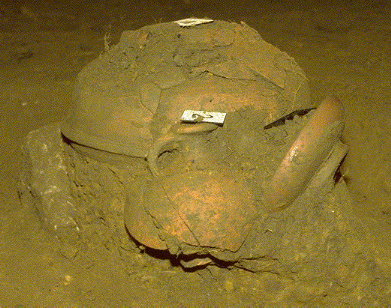
Fig. 7 Cremation tomb in situ (a large upturned vessel is covering the urn). Last third of 2nd century to first third 3rd century AD, Mamer-Tossenberg
Without prejudice to the findings of current studies, it is already clear that we are witnessing a fairly important change in indigenous funeral customs since the Claudian period, although the process of change takes place over several decades. Its main characteristic is a gradual reduction in the number of secondary offerings and an increasing degree of standardization of inventories and graves. Witness for instance the disappearance during the time of Claudius of so-called "aristocratic" tombs and the special rituals characteristic of them. The high social status of the deceased is indicated by the external appearance of the tomb (funerary inscription, monument, etc.) and by the topography of burial sites, especially the spatial separation from the common graves, rather than by the inventory of primary or secondary offerings.
This evolution is in line with a Romanization process observable in northern Gaul on a much broader geographic scale and also evident in other areas such as material culture and architecture. For the civitas of the Treviri however it is tempting to relate it also to major changes in the social hierarchy, the disappearance of a large part of the old aristocratic elite as a consequence of the radical upheaval of social and economic structures caused by the so-called revolt of the Batavi in 69/70 AD (see Urban 1985 and Heinen 1985 for details of events) and the measures taken by the Roman administration after its repression.
For many of the cemeteries in our data bank, the information is too incomplete to determine precisely the types of cremation graves that were encountered by the excavators. We can however assert with conviction that busta are extremely rare, only one case being authenticated and known so far ( Nospelt-Tonn) (Thill 1968). Busta are burials where the cremation took place directly above the grave, so that the body was cremated and buried at the same place.
As far as the differentiation of other types of cremation graves is concerned, until now that has been possible for one site only, namely Septfontaines-Dëckt. At Septfontaines, 87 graves contained no pyre remains at all, whereas only 33 graves had the remains of a pyre.
The documentation is thus far too limited to come to any regional conclusions. At Septfontaines, almost all the tombs containing the remains of a pyre, which in any case are less numerous, seem to post-date the Flavian period.
As regards the relationship between cremation and inhumation, firstly out of a total of 228 Luxembourg sites yielding Gallo-Roman tombs only 28 (i.e. 12%) involve inhumations. It is clear that cremation remained the predominant ritual throughout the 1st, 2nd and 3rd centuries.

Fig. 7 Cremation tomb in situ (a large upturned vessel is covering the urn).
Last third of 2nd century to first third 3rd century AD,
Mamer-Tossenberg
This does not preclude the possibility that inhumations occurred throughout the Roman period (see Echternach: first half of 1st century; site Ellange: end 1st-beginning 2nd century; Stadtbredimus: 1st century; Dalheim: 3rd century; site Junglinster: 3rd century). It should however be noted that these are either isolated tombs or isolated inhumations in larger cremation cemeteries.
For 4th century sites, however, the relationship between inhumation and cremation is reversed. Cremation is now clearly in the minority, although it never disappears completely. In all, 27 sites yielded 4th century tombs and we know the funeral ritual involved for 20 of them:
| Cemeteries occupied in the 4th century | number | percentage |
|---|---|---|
| cremations only | 6 | 30% |
| inhumations only | 12 | 60% |
| cremations and inhumations | 2 | 10% |
From a chronological point of view, two results seem particularmly interesting - the small percentage of cemeteries showing continuity from the 3rd to the 4th century, and the small number of rural cemeteries of the 4th century. Both can be interpreted as signs of a major crisis which affected the rural areas of the civitas treverorum in the second half of the 3rd century. This crisis was followed by a decline in rural settlement all through the 4th century. On a larger geographical scale, these developments constitute only a regional form of the general crisis of the Roman Empire in the second half of the 3rd century (civil wars and Germanic invasions) and its impact on the military, economic and social evolution for the north-western provinces of the Empire. Evidence from other fields of study (for example the analysis of settlement patterns) corroborates this view.
At the present state of our research, it seems too early to draw final conclusions. As has already been said in the introduction of our paper, only the first of several steps in our work have been completed. Only when the analysis of the archaeological material has been completed will it be possible to use the Gallo-Roman graves and cemeteries of the Grand Duchy of Luxembourg to their full potential as sources for the social, economic, cultural and religious history of northern Gaul. The aim of our contribution is to show the potential of this type of material.
© Internet Archaeology
http://intarch.ac.uk/journal/issue4/polfere/74polfere.html
Last updated: Tue Dec 09 1997